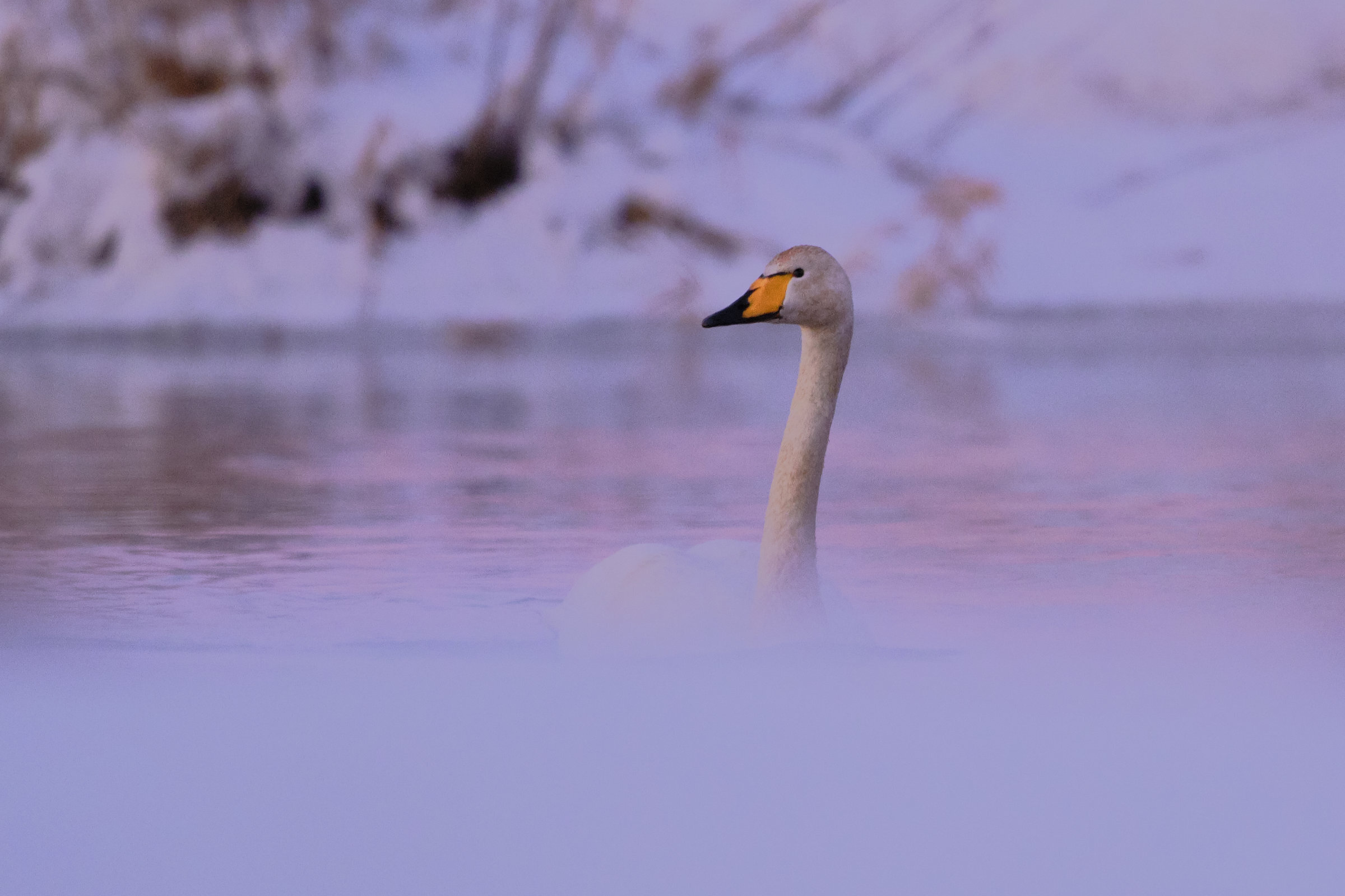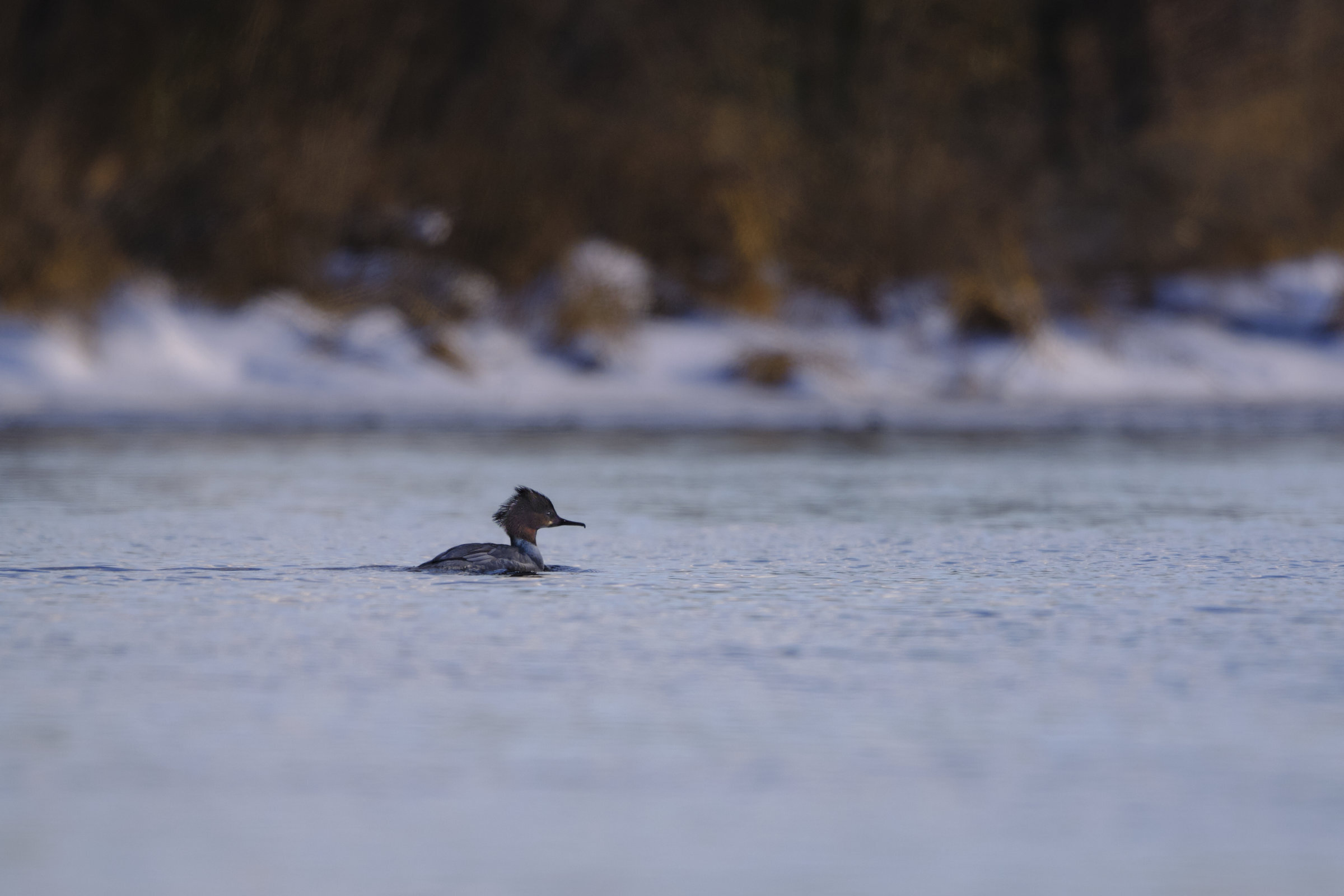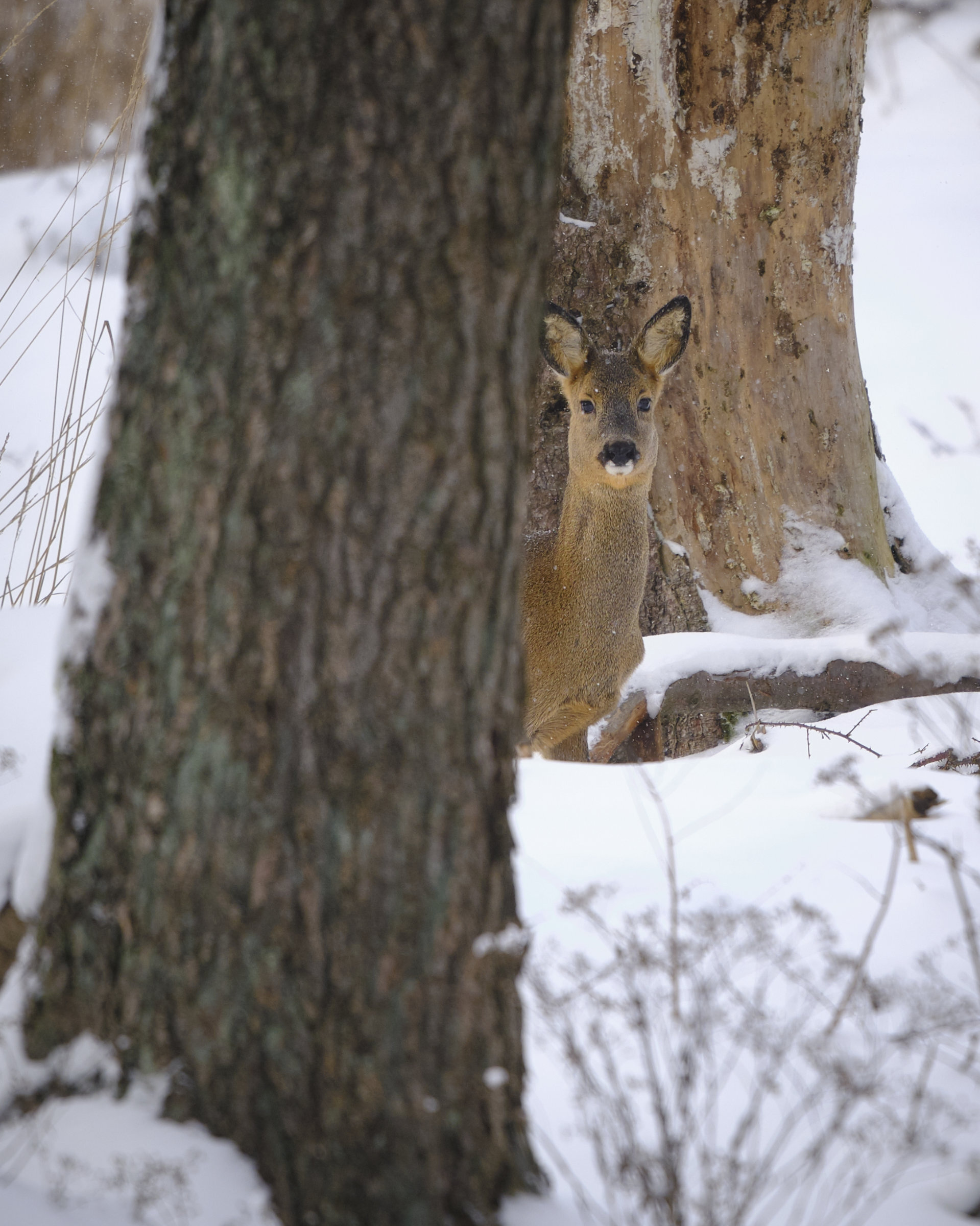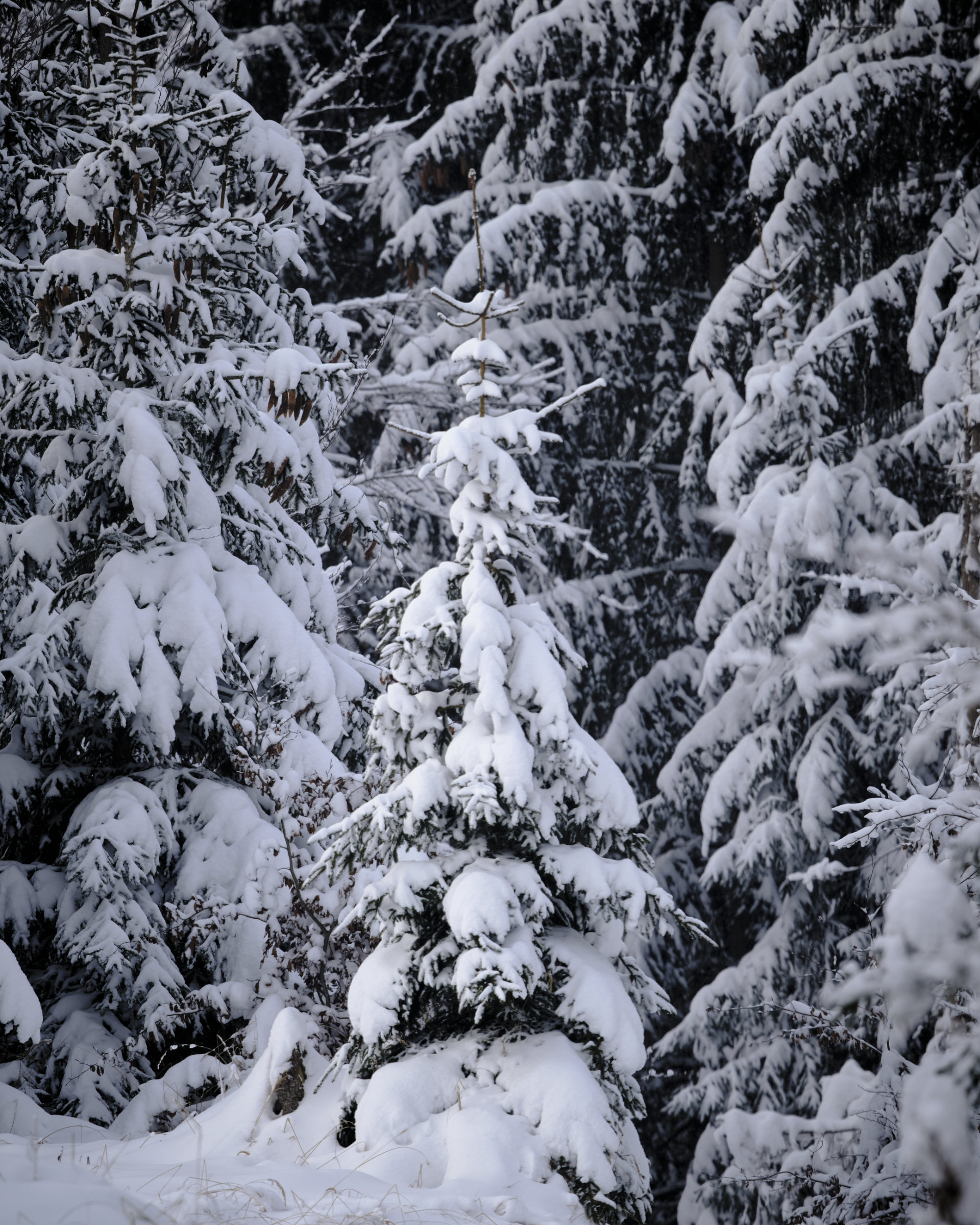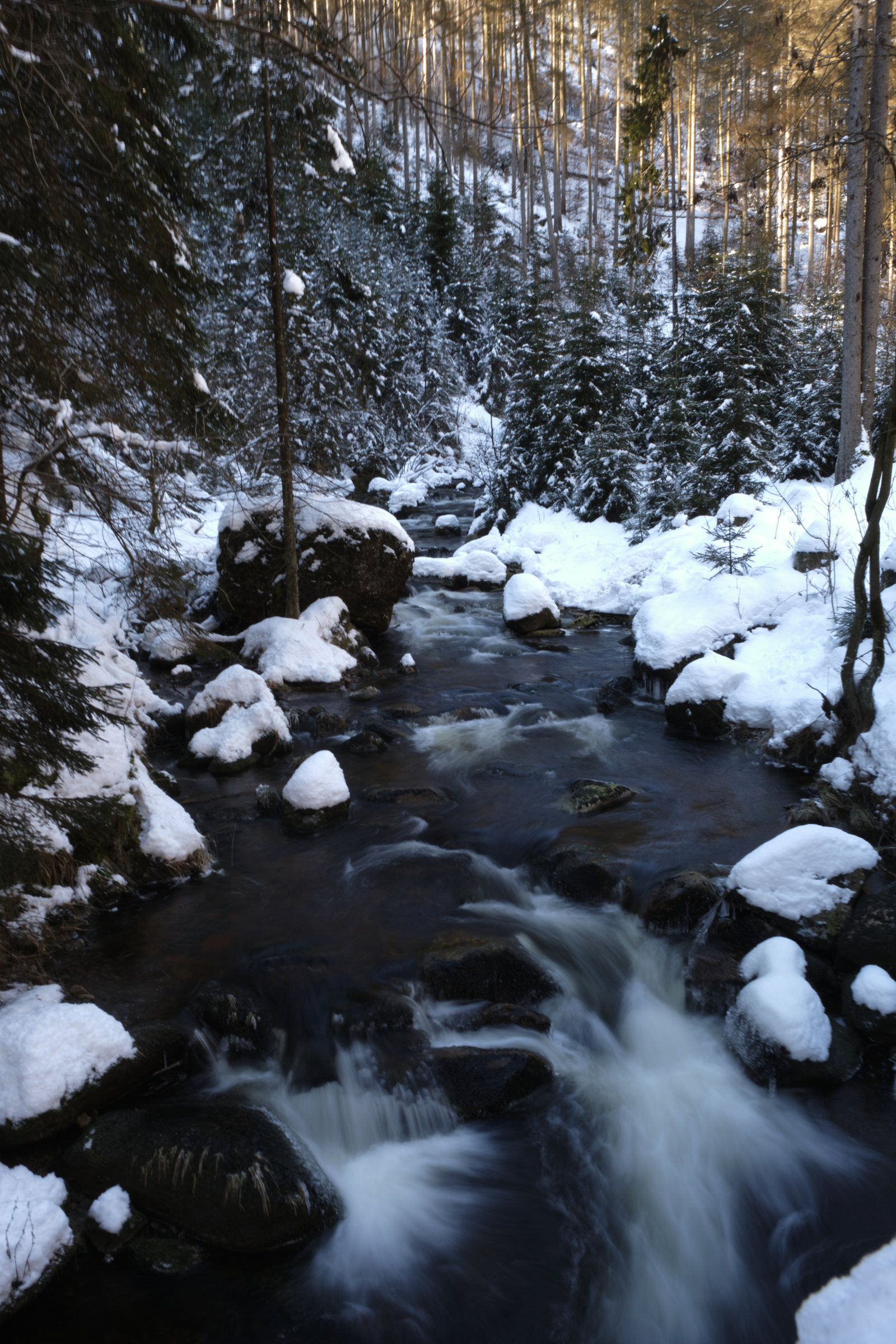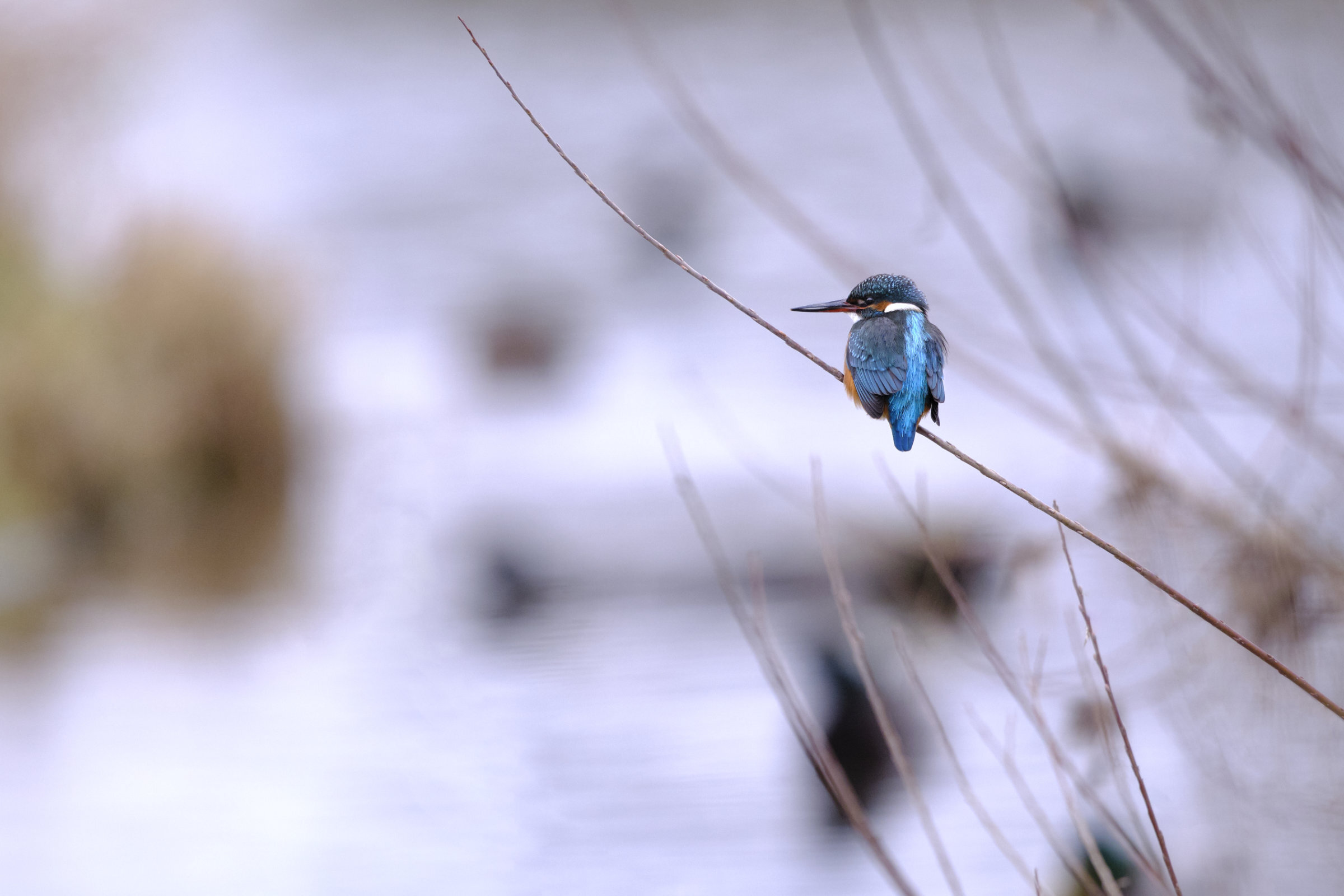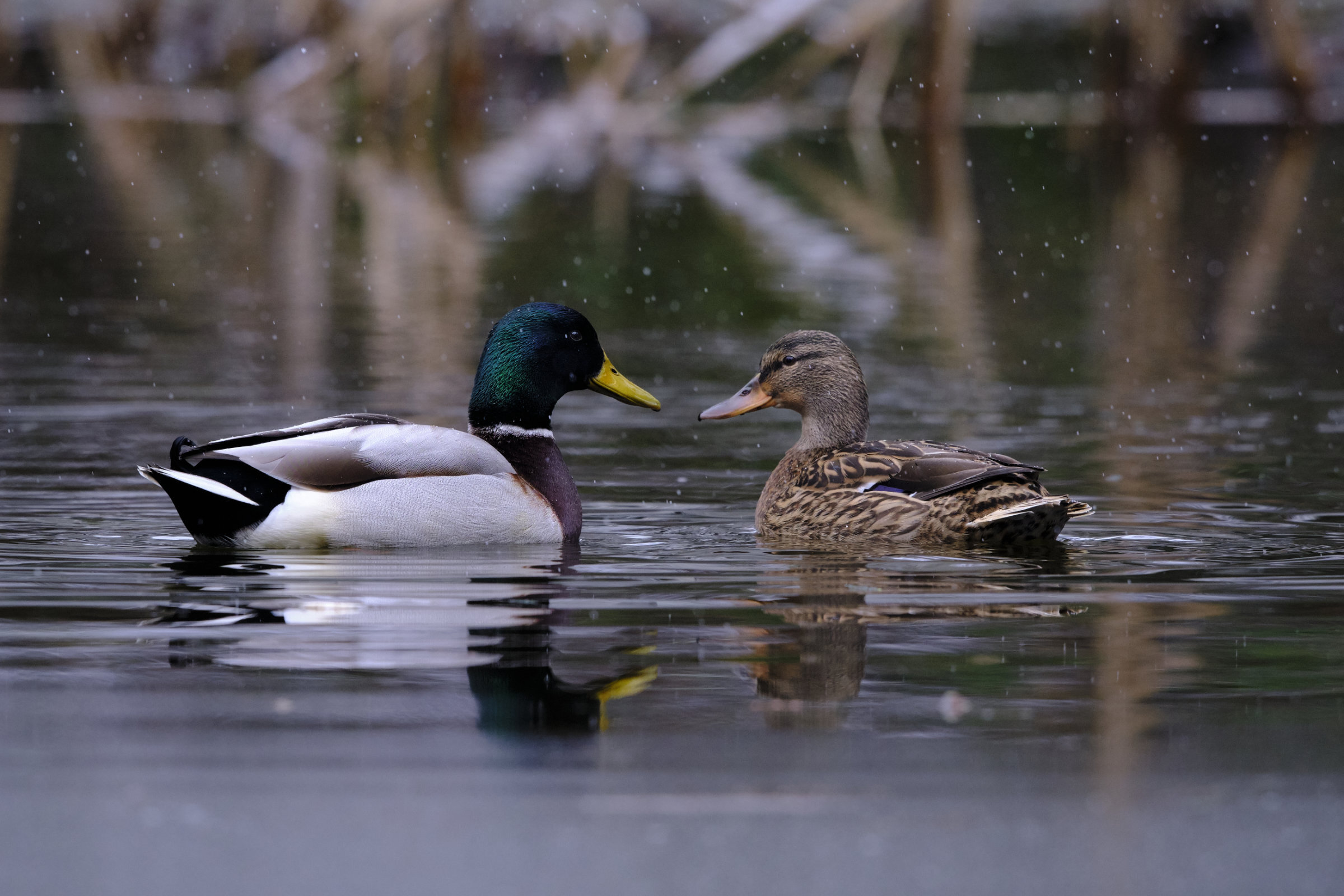It is spring - full swing. Everyone in the animal realm is courting, mating, building, nesting, breeding or already having its offspring. Although in the local Harz mountain range, there is still snow and the night temperatures in Northern Germany remain around freezing temperature, there is no doubt: nature is starting up. For me, this is the time to finally look back to a winter, when I have been out quite a lot.
Whooper swans hibernating in Northern Germany. Mid-winter it looked a lot like their Scandinavian breeding grounds.
Cold and snowy: A surprise winter in Northern Germany
Usually winter in Northern Germany is a dull affair. Grey and with a lot of rain. This year has been different. Especially January and February brought really low temperatures and a lot of snow. My hometown of Goettingen recorded over 30 cm of snow and temperatures as low as -28° C. This is a once-every-30-years-occasion. The local mountain range had more snow, while even the lowlands received its fair share of the white stuff. And while a lot of humans enjoyed the pleasures of winter, nature struggled. Especially smaller birds and birds of prey died in some numbers. The local kingfisher-population nearly entirely collapsed. Surprisingly the white storks, geese or cranes that hibernated here, fared pretty well. With four weeks, the cold was not long enough to seriously harm it.
I mainly have been around at three different places or regions this winter.
My hometown of Goettingen, the local Harz mountains and the southernmost parts of Lueneburg heath.
The latter is famous for a lot of different Scandinavian birds such as all sorts of geese, swans or cranes hibernating there. But all three places had one thing in common. Due to the really low temperatures, nearly every pond or lake was frozen - so all water related birds resorted to the rivers, where they found some open water.
1. Images from the lowlands
Especially on the Aller river, you could find hundreds of ducks, geese or swans. One day, a young roe deer surprised me big time. A cross-country skier disturbed it on the farther bank of the river. The roe deer dashed off, into the river, navigated its way through the drifting ice and climbed the near bank. The water was around freezing and the air way below -10° C. The roe deer looked pretty miserable, but it simply shook the water off and strolled to the safety of the near forest. Wow - what hardships those animals can endure. The unusual conditions provided plenty of opportunities to watch Whooper and Tundra swans which are not too often even in Northern Germany.
2. Images from the (Harz) mountains
Winter and lots of snow aren’t too unusual in Northern Germanys highest (and pretty much only) mountain range. In the middle of the mountains sits the protected National Park, which is a sanctuary for a lot of wildlife, such as Red deer, Eurasian lynx or the wildcat. Deep valleys, dense forests and small rivers make the most part of the range.
3. Images from my hometown
Depsite its relatively small size, my hometown Goettingen has been on the national news quite often this winter. Over the course of two weeks in February, it has been the coldest place ih whole Germany, with temperatures constantly below -20° C and snow heights over 30 centimeters. For Northern Germany, this is highly unusual. Every body of standing water was frozen and even the slower running rivers. Only the swifter flowing waters remained open, even if there outer waters were frozen, too. No kingfisher remained in the area, they either died or fled. A lot of buzzards died as well as the few remaining redstarts. But life and death are oft pretty close in nature. Thousands of finches flocked the remaining patches of sunflower or hemp and attracted Sparrowhawks and even a Merlin. The population of Grey partridge fared surprisingly well, too and cuddled together into large groups of ten or more birds that withstand not only the cold, but all the skiers, who literally rode “cross-country”. Only the White-throated dipper remained entirely unimpressed of all the cold and white. It continued hunting larvae in the icy-cold waters of the swifter rivers and rivulets.

